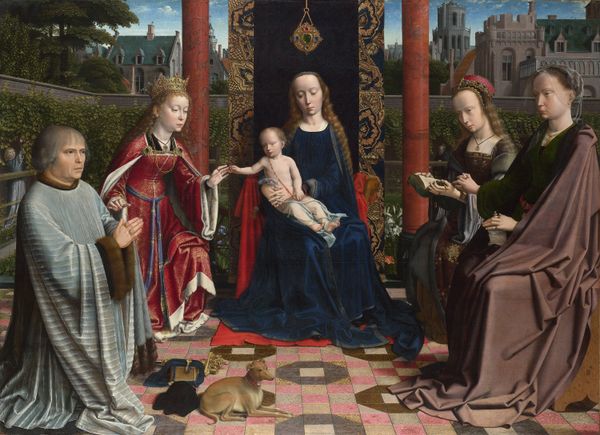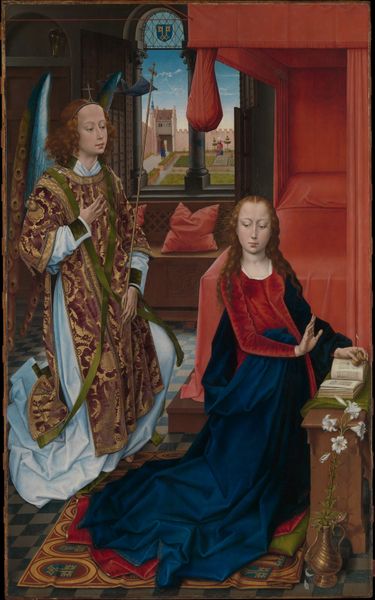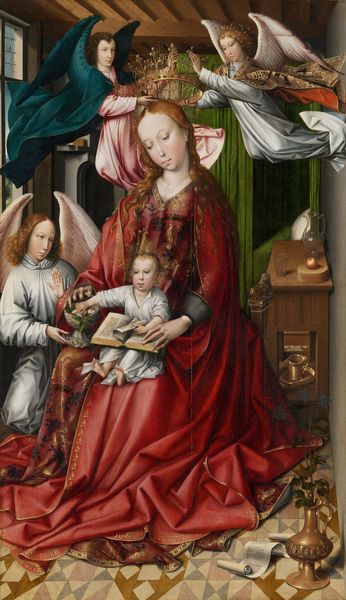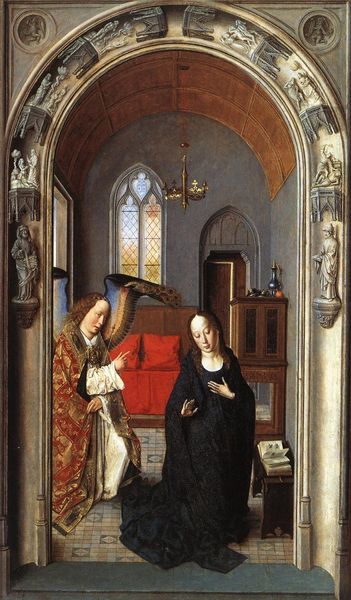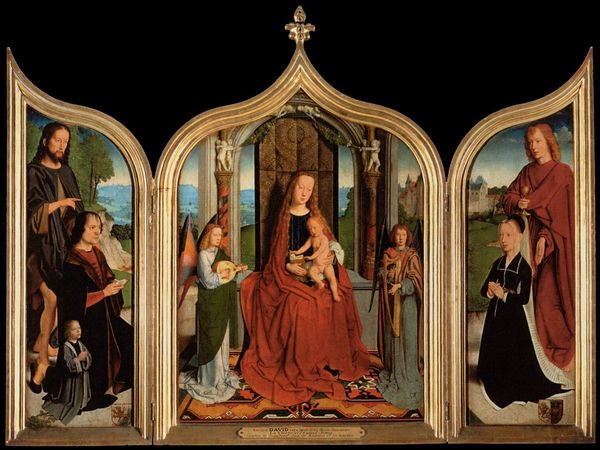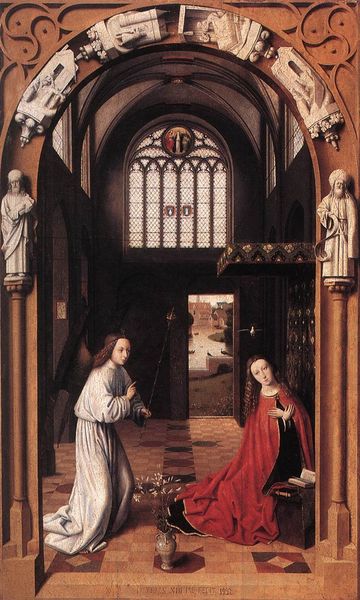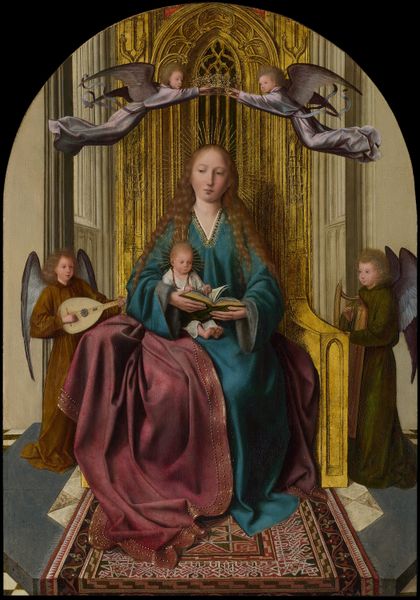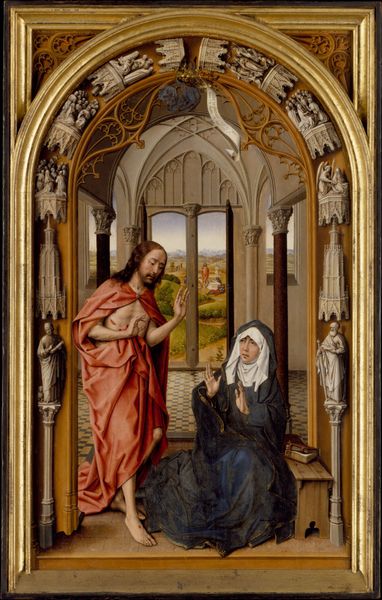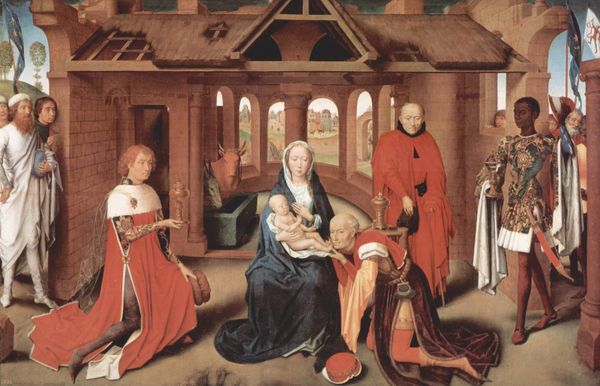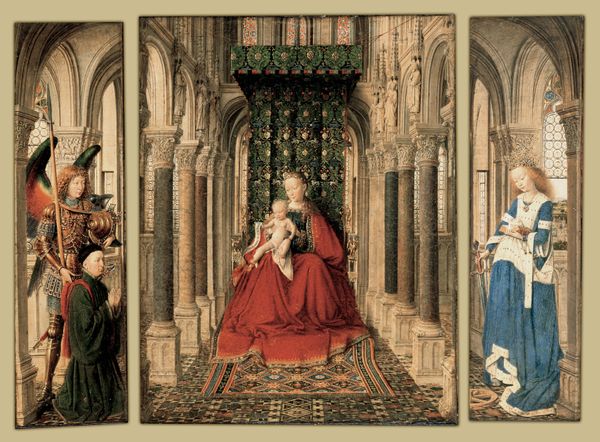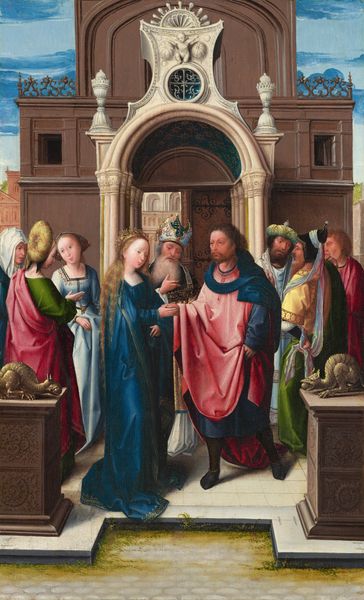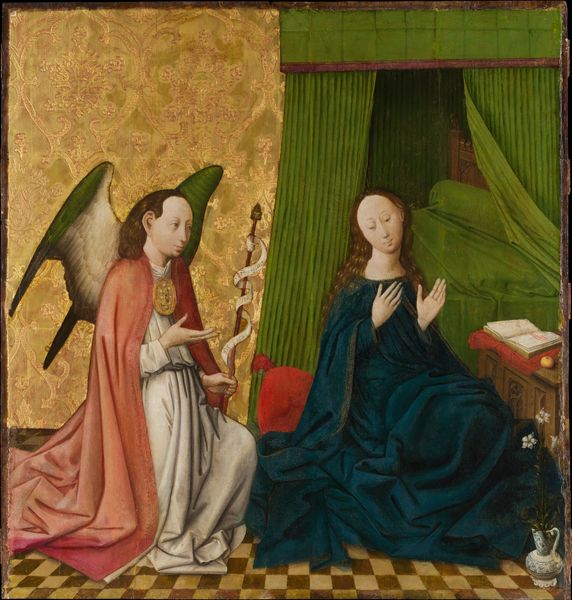
painting, oil-paint
#
portrait
#
narrative-art
#
painting
#
oil-paint
#
oil painting
#
christianity
#
history-painting
#
italian-renaissance
#
virgin-mary
#
angel
Copyright: Public domain
Curator: This is Jan van Eyck's "The Annunciation," an oil on canvas created around 1435. You can find this iconic piece housed here at the National Gallery of Art in Washington, DC. Editor: It's instantly striking! The figures, bathed in this almost ethereal light, but rendered with an astonishing realism. It feels so contained and poised, yet… something feels a little off. Curator: Indeed, that palpable sense of stillness resonates deeply when one considers its historical moment. Painted during a period when religious art served crucial pedagogical and social functions, the painting not only tells the biblical story of the angel Gabriel announcing to Mary that she would conceive and bear the son of God but also subtly reflects the shifting power dynamics of the Burgundian court. Editor: Tell me more about these power dynamics; however, first I'm compelled to observe how van Eyck handled the contrasting textures and light. The crisp folds of Mary’s gown against the plush fabric of the angel's robe create a compelling tension—it draws me in so that I begin thinking about a certain psychological dimension that the material details add. Curator: Consider the opulence of the textiles. They were commodities fueling Burgundian wealth, showcasing the court's refinement. The angel’s brocade isn't just a decorative element; it signifies the wealth and international reach of the patrons commissioning art like this. Even the specific architectural details reference contemporary church design—placing the holy scene within a context familiar to the viewers of the time, emphasizing the importance of these places and the individuals who were privileged enough to populate these sacred halls. Editor: Fascinating. Although, the unusual, almost elongated proportions still give me pause. Mary's figure feels oddly stretched and vertical. I have to consider, in visual terms, how van Eyck may have bent reality to serve some symbolic purpose in the composition. Curator: Perhaps to emphasize Mary's spiritual elevation? After all, consider the context. This work invites reflection on female piety and divine destiny. We see here that Van Eyck isn’t just presenting an image but is shaping a role model. Editor: Precisely! Looking beyond the narrative, the calculated geometry of the architectural backdrop adds a subtle structure to this already dynamic work. I appreciate how Van Eyck manipulates our perception. Well, I could study this one for hours. Curator: As could I. Thank you for lending your perspective; hopefully, we’ve helped our audience gain a better grasp of "The Annunciation's" multilayered context and lasting power.
Comments
No comments
Be the first to comment and join the conversation on the ultimate creative platform.

